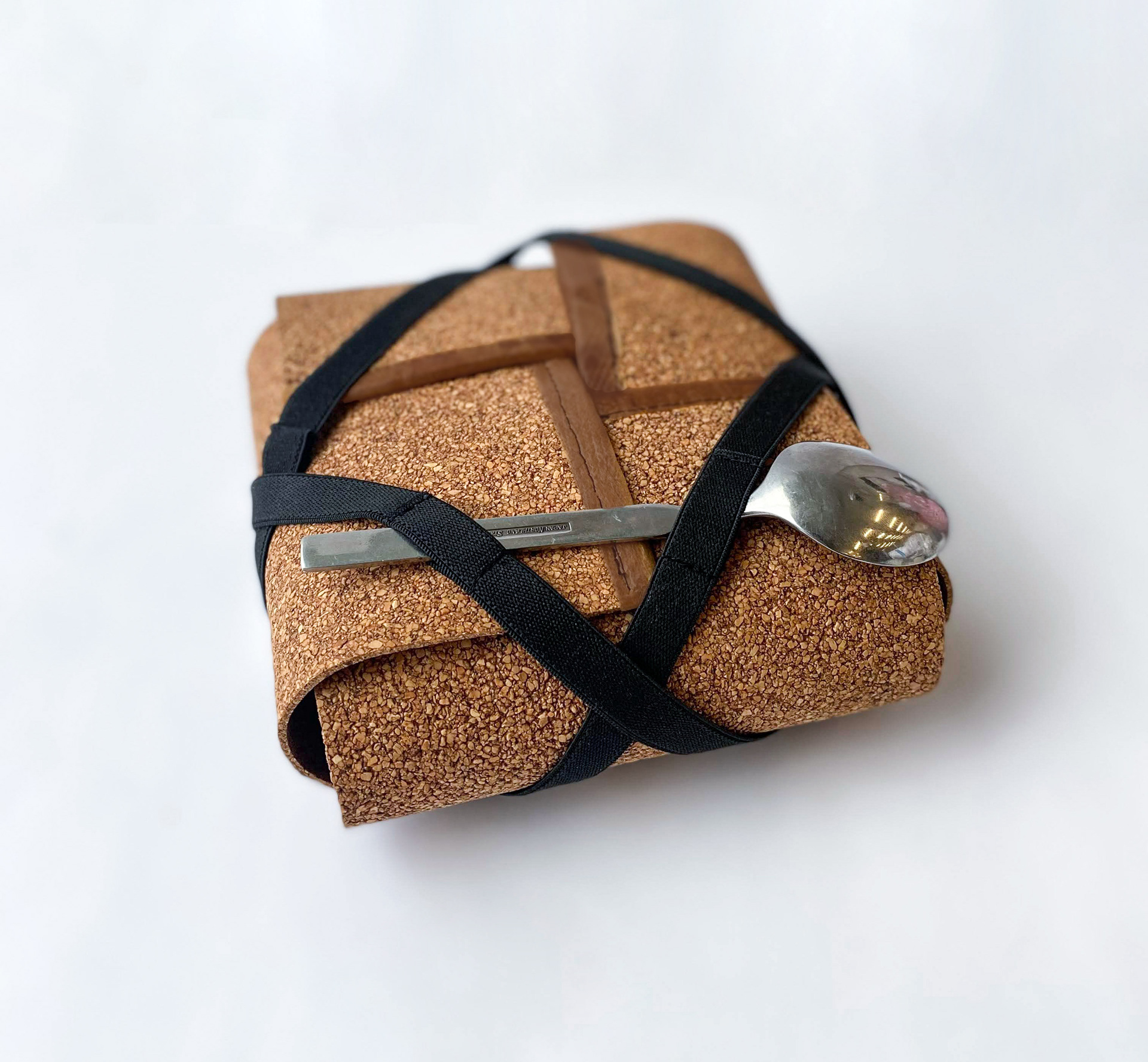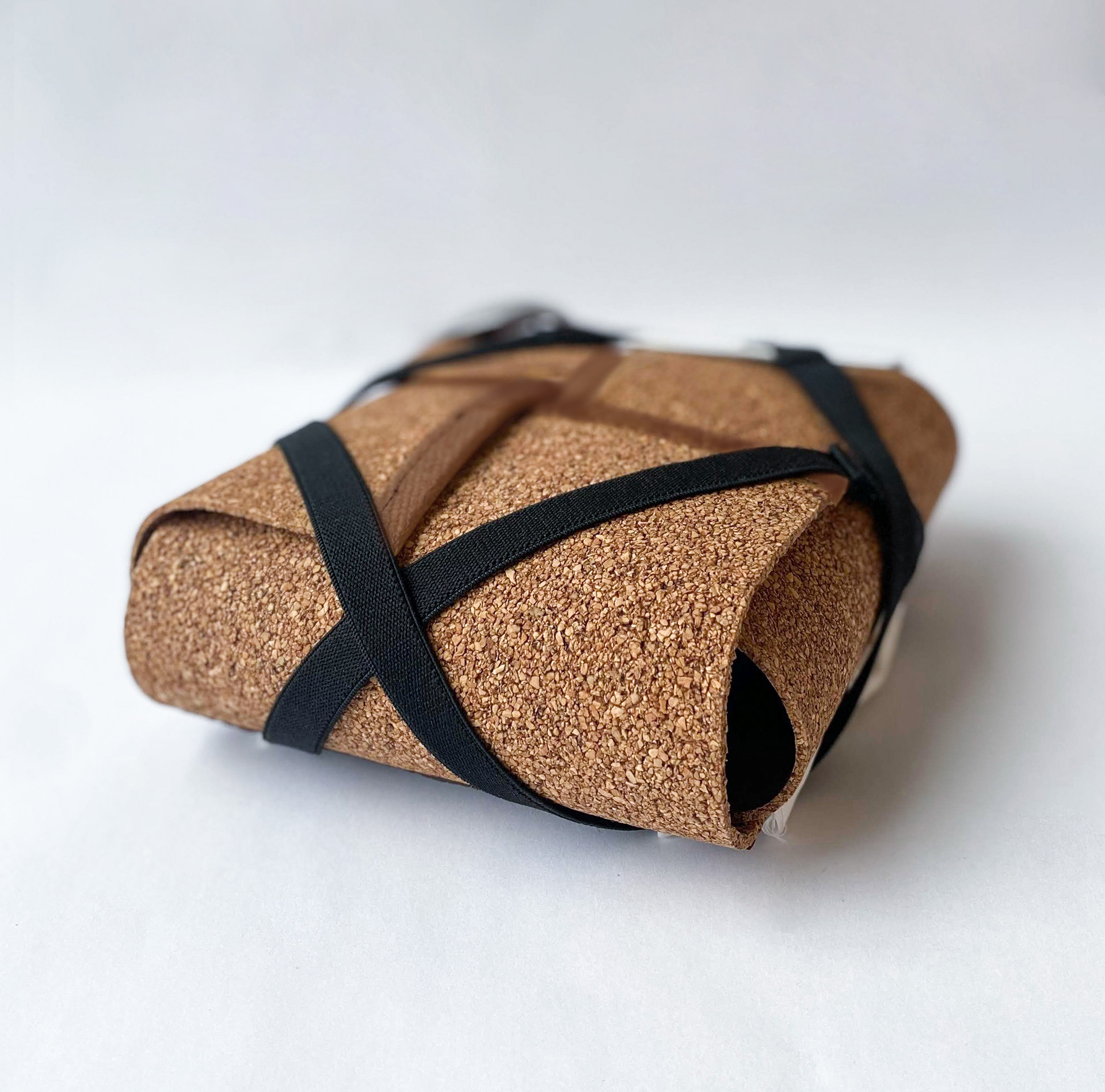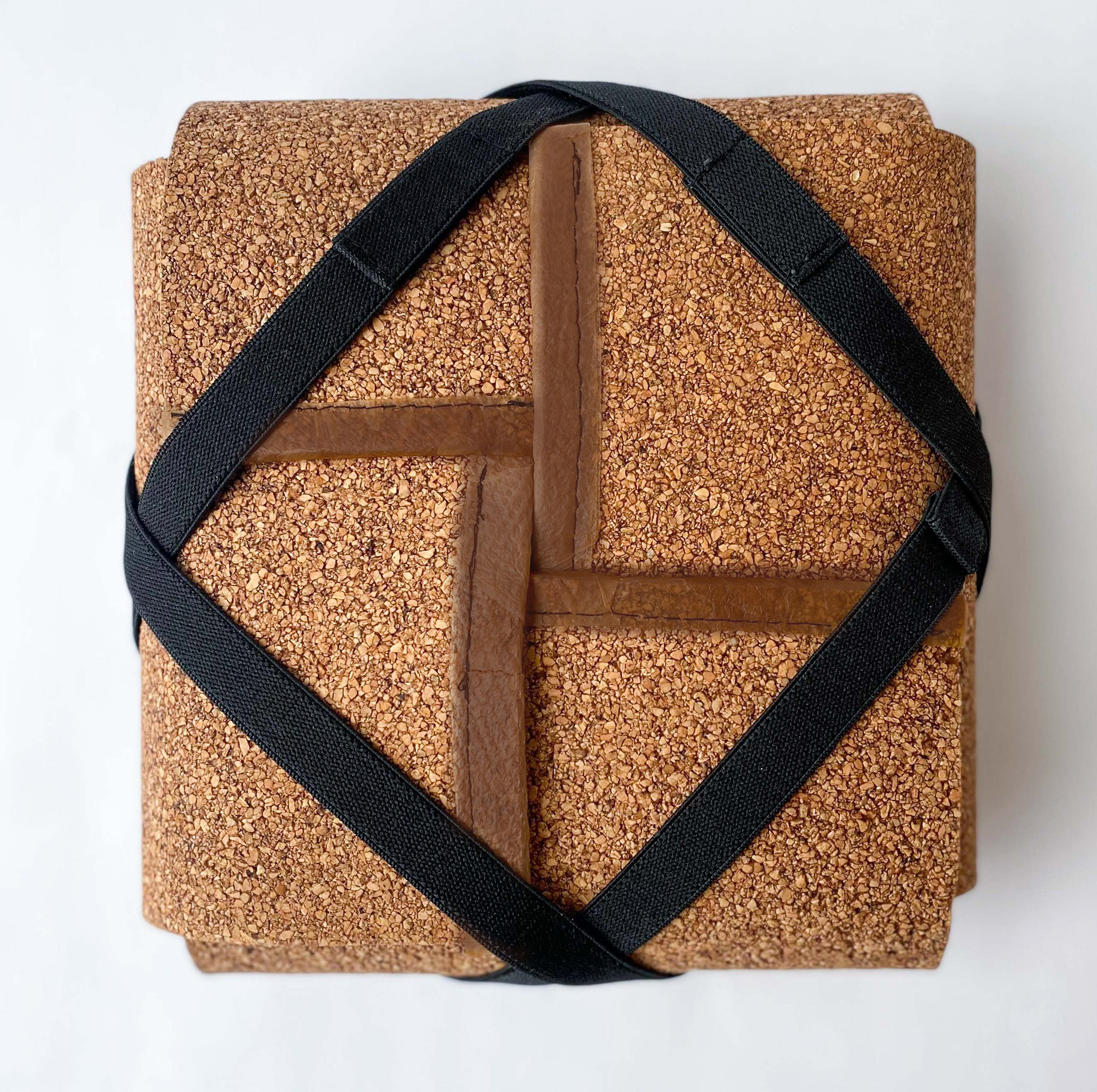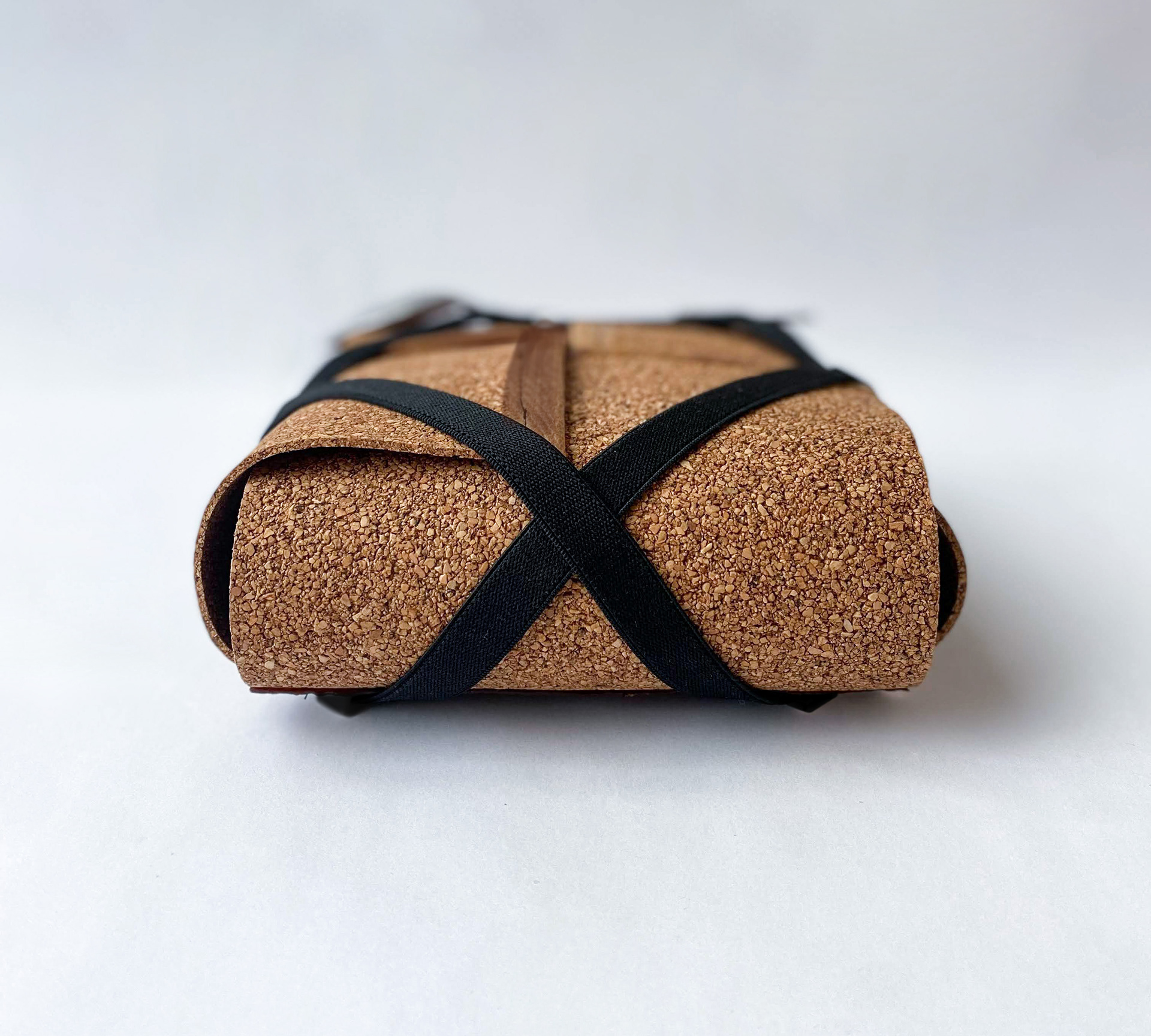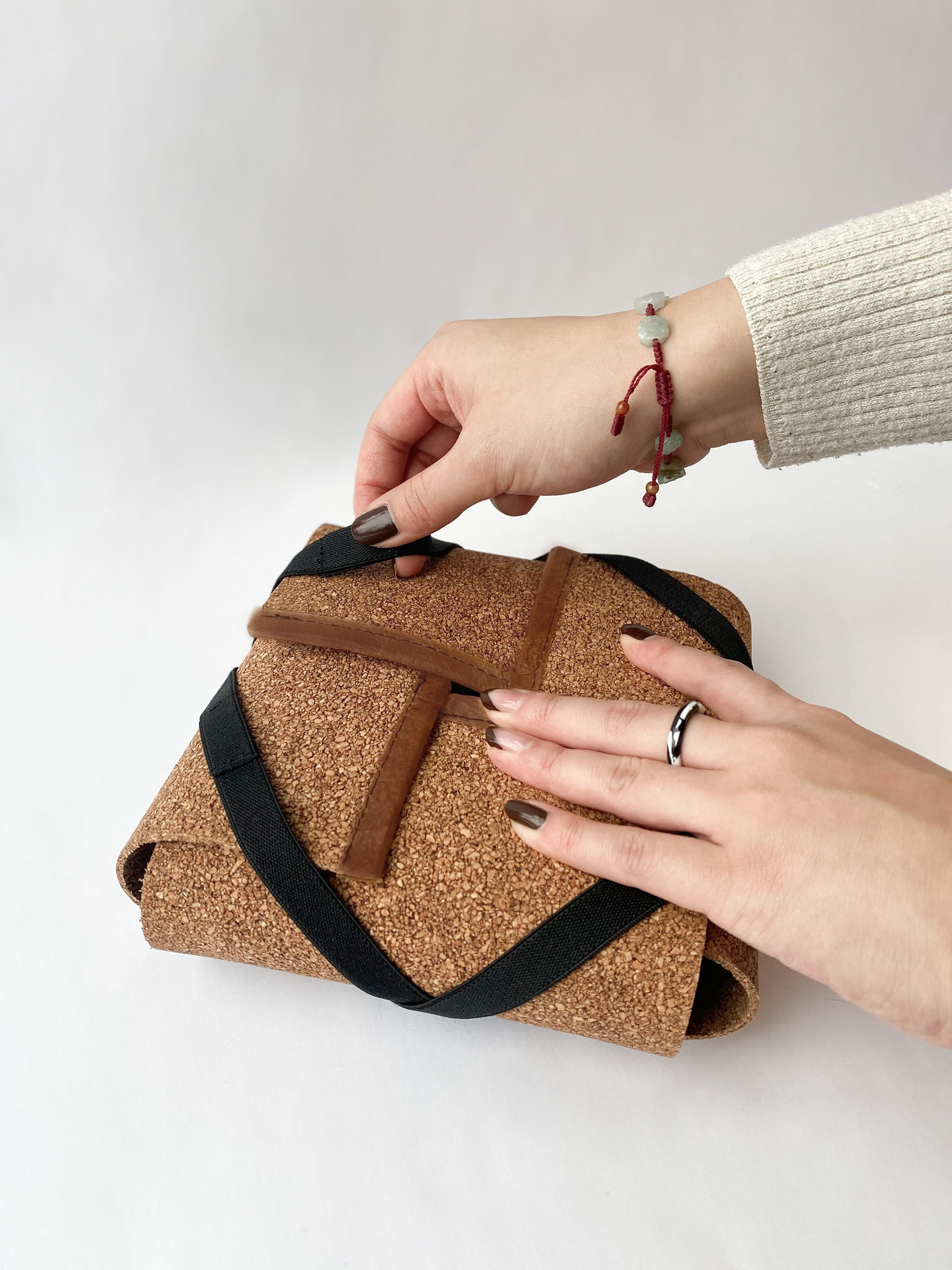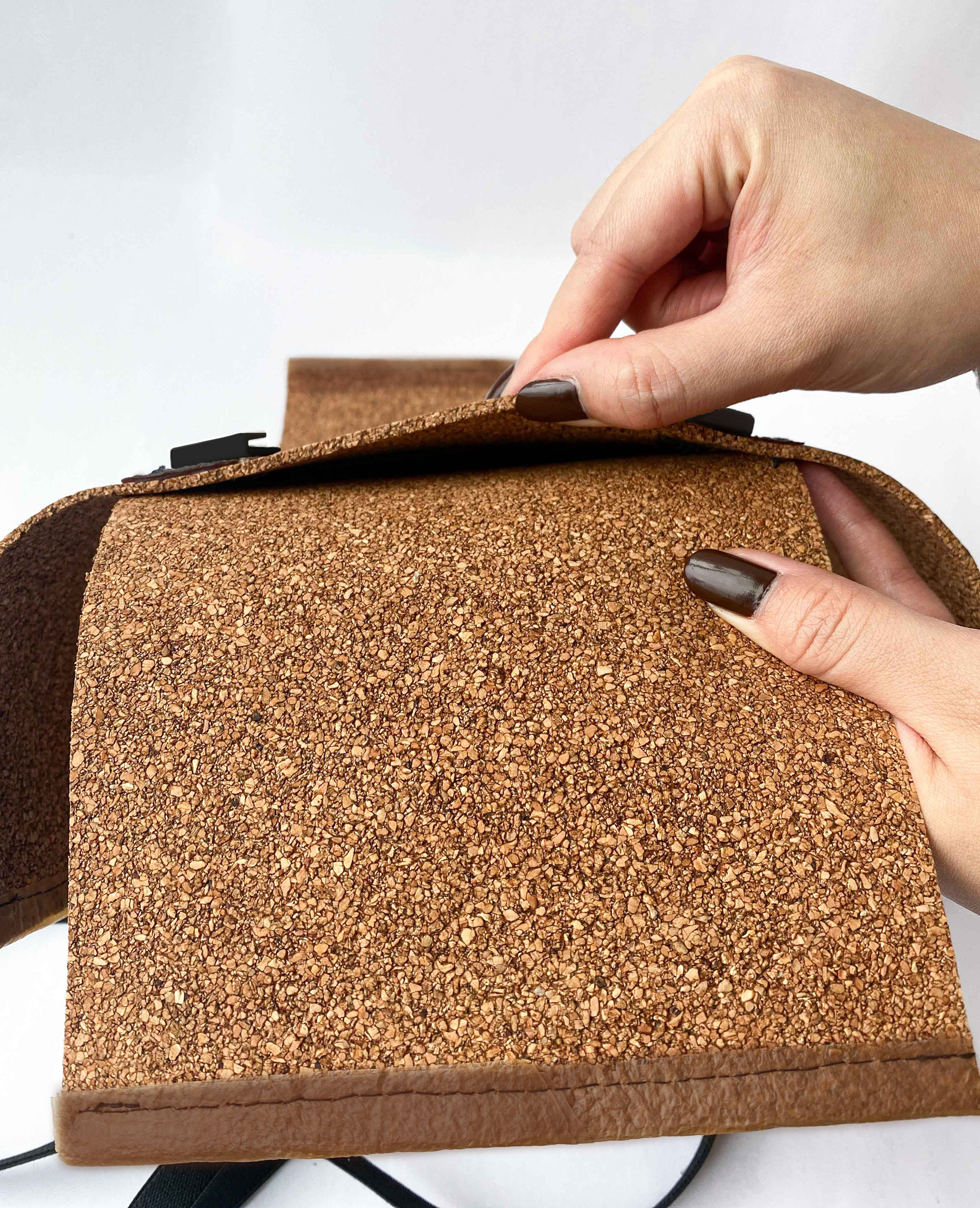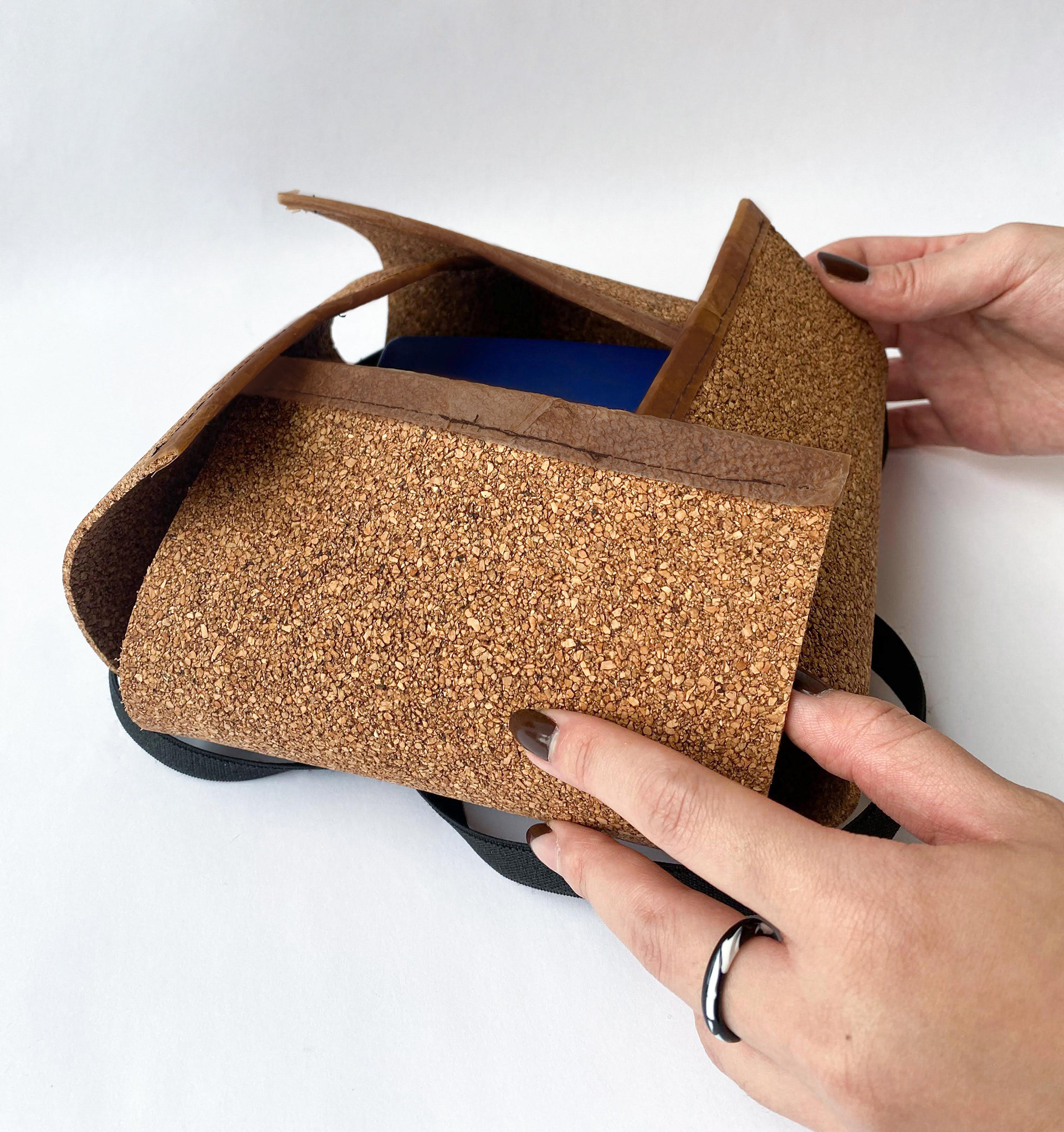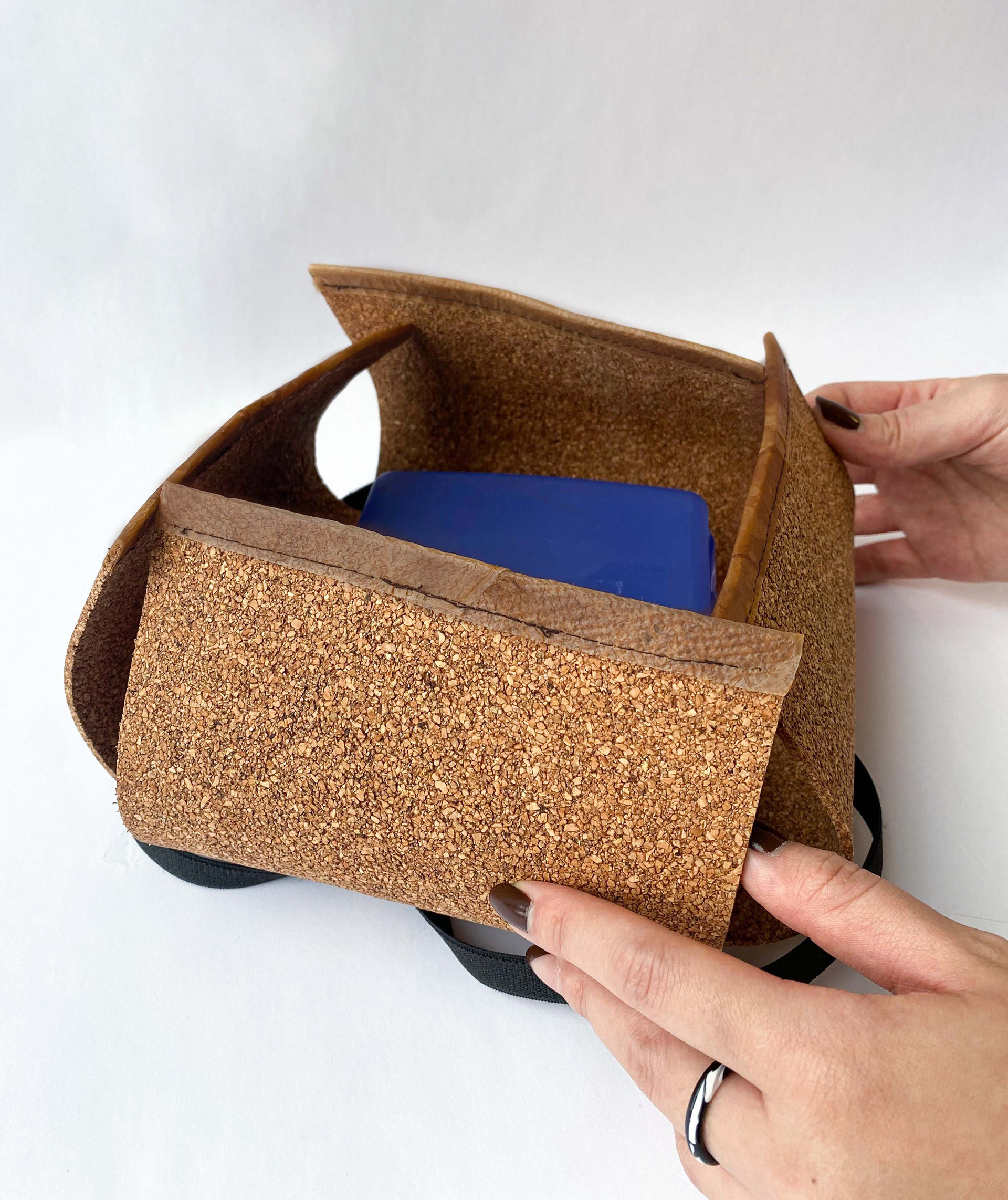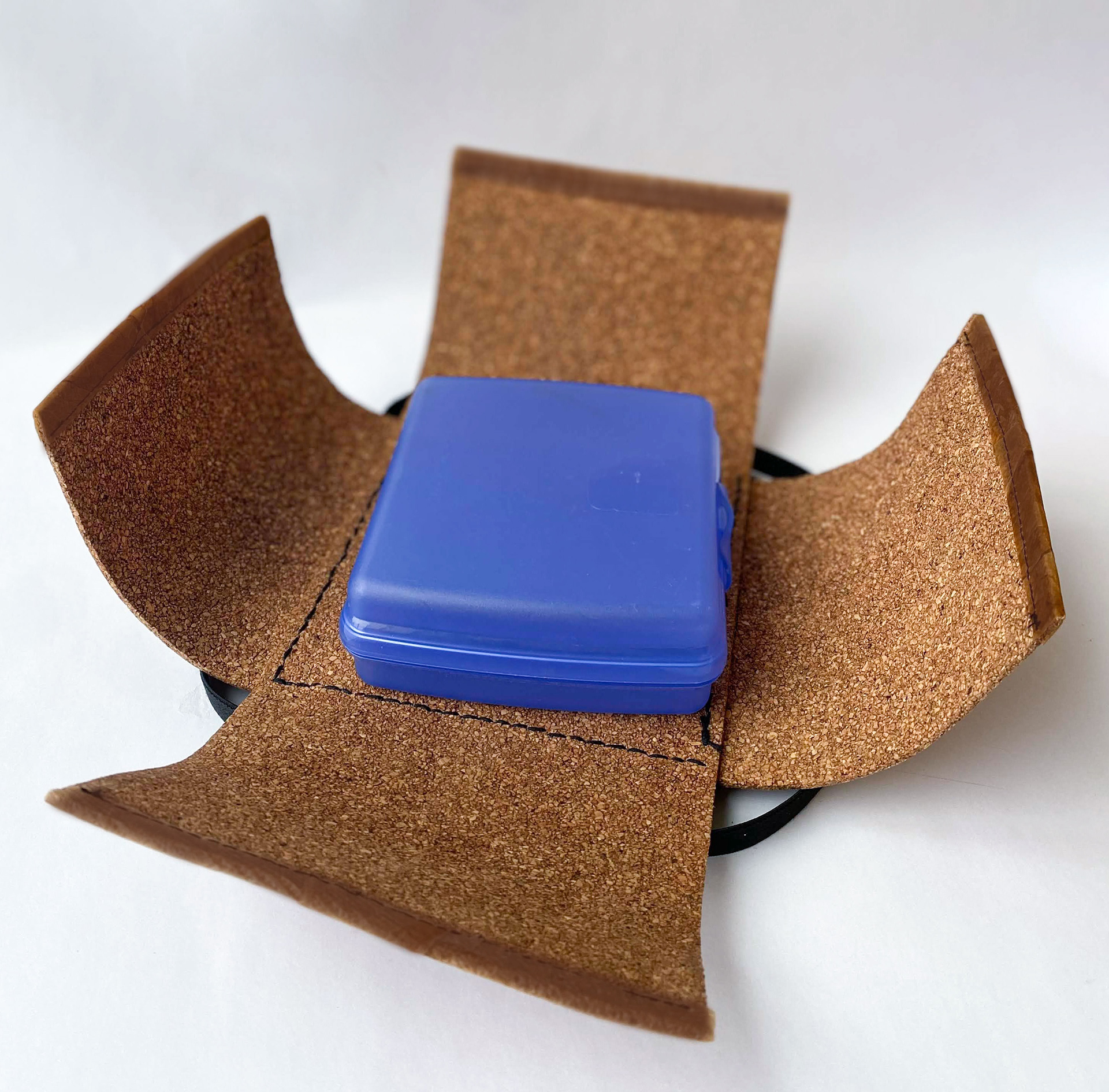PAKIT pays homage to a traditional furoshiki (風呂敷), a decorative cloth wrapped around a bento box. Our team wanted to focus on the natural thermal insulative properties of cork and explore homemade adhesives. The incorporation of scoby is used as an alternative leather to strengthen and protect the lunch bag from areas prone to wear. The lunch bag fully opens up for easy access and cleaning purposes.
- The Research Proposal -
- Experiments -
We began our explorations with adhesives made from tapioca, rice flour and gelatin, as well as EcoSynthetix, an eco-friendly resin. Though we were unsure with the correct ratio of cork to adhesive, we quickly decided to go for a 1:1 ratio, to keep consistency between tests.
Following our first failed attempts, we turned to a bioplastics cookbook, of which three recipes were used: Agar Agar, Gelatin, and Gelatin with Clay. After numerous tests with these mixtures, we decided to use Gelatin, as it was the most flexible and offered the greatest tensile strength. Once we had our adhesive selected, we increased the flexibility by adding more glycerin, and found the best adhesive to cork ratio.
Throughout our experimentations, we found a larger adhesive to cork ratio was not necessarily better for flexibility, and starch based adhesives were less effective than protein based adhesives, which influenced our change to plant and gelatine based bioplastics.
As we wanted our cork sheets to act as a fabric material, we knew we wanted to use sewing techniques. We used a domestic sewing machine to test how the material would hold up to the punctures of the needle. We also performed a series of stress tests such as water dunking, scoring, bending, and using an open flame.
- Growing Kombucha Scoby -
Growing the scoby was a straightforward but time-consuming process, requiring weeks to grow a sheet thick enough for use.
The process used an existing scoby, which was placed in tea and left to grow in a warm, dark environment, with as little disturbance as possible to ensure a smooth, flat sheet. Our initial tests used dried scoby in the form of small circular discs of varying thicknesses. Once we decided on a direction, we realized we would need larger sheets, which we grew in large baking trays.
We also experimented growing the scoby with cork granules to see if it would fuse, but we were unsuccessful. Though the scoby sheets were too thin and thus unusable, we were able to outsource full-grown scobys from Facebook Marketplace which we attempted to dry.
- Ideation -
Following our material and adhesive choice, we were tasked with designing a product which would be informed by the natural properties of cork, as well as the properties of cork with the adhesive. We began by considering different properties such as sound absorption and thermal conductivity, and creating products which would feature these properties as well as tensile strength. Our first ideations were flexible containers and ear protection devices, but we focused mainly on the container concepts in the later stages.
We began by designing containers ranging from wallets to pencil cases and food storage containers, before making paper models to determine proportions and the way the concepts would function. In the later stages we exclusively focused on food containers, as we found the thermal insulation and water repellant properties of cork were the most beneficial for this type of product.
After finding a direction to pursue, we focused on making an item which would be easy and simple to use. We were informed by our cork sheets and found different folding techniques which could apply to the product. We were inspired by origami and sewing techniques to find a shape which would fold and protect a container.
The design we settled for was a cross shape from two sheets sewn together, which folded to wrap around a food container., We decided on a simple strap to hold it all together, which we found difficult to wrap around the cork without slipping. This was fixed by designing feet to the bottom of the lower cork sheets, which would also act as a hook to hold the strap.
- The Making Process -
Following the ideation phase, we made a mold to press the cork mixture into sheets.
- The Final Result -
